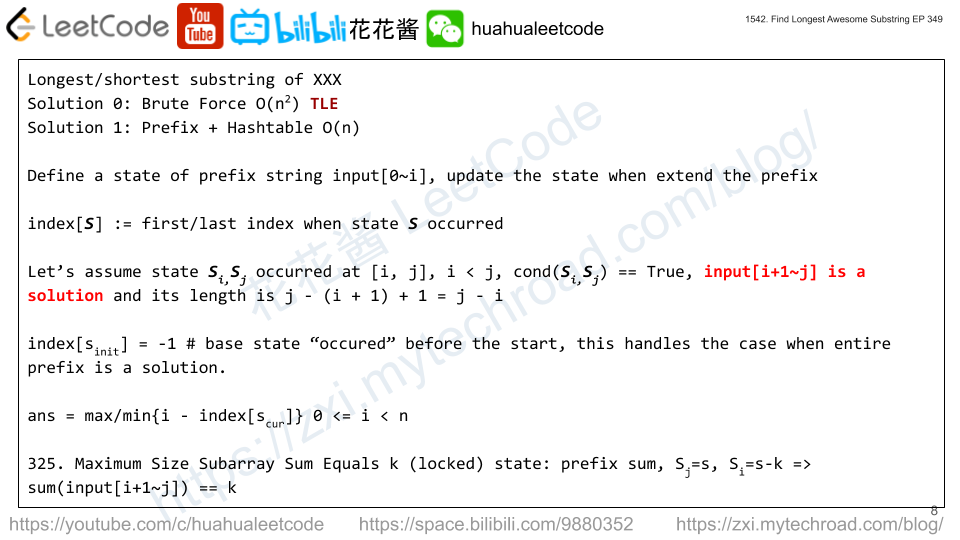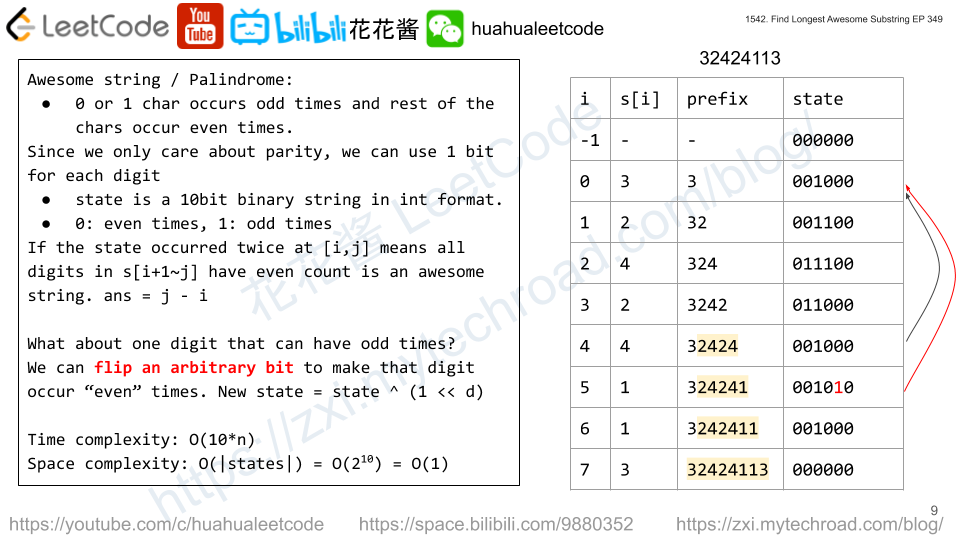There is a hidden integer array arr that consists of n non-negative integers.
It was encoded into another integer array encoded of length n - 1, such that encoded[i] = arr[i] XOR arr[i + 1]. For example, if arr = [1,0,2,1], then encoded = [1,2,3].
You are given the encoded array. You are also given an integer first, that is the first element of arr, i.e. arr[0].
Return the original array arr. It can be proved that the answer exists and is unique.
Example 1:
Input: encoded = [1,2,3], first = 1 Output: [1,0,2,1] Explanation: If arr = [1,0,2,1], then first = 1 and encoded = [1 XOR 0, 0 XOR 2, 2 XOR 1] = [1,2,3]
Example 2:
Input: encoded = [6,2,7,3], first = 4 Output: [4,2,0,7,4]
Constraints:
2 <= n <= 104encoded.length == n - 10 <= encoded[i] <= 1050 <= first <= 105
Solution: XOR
encoded[i] = arr[i] ^ arr[i + 1]
encoded[i] ^ arr[i] = arr[i] ^ arr[i] ^ arr[i + 1]
arr[i+1] = encoded[i]^arr[i]
Time complexity: O(n)
Space complexity: O(n)
C++
|
1 2 3 4 5 6 7 8 9 10 |
class Solution { public: vector<int> decode(vector<int>& encoded, int first) { const int n = encoded.size() + 1; vector<int> ans(n, first); for (int i = 0; i + 1 < n; ++i) ans[i + 1] = ans[i] ^ encoded[i]; return ans; } }; |

